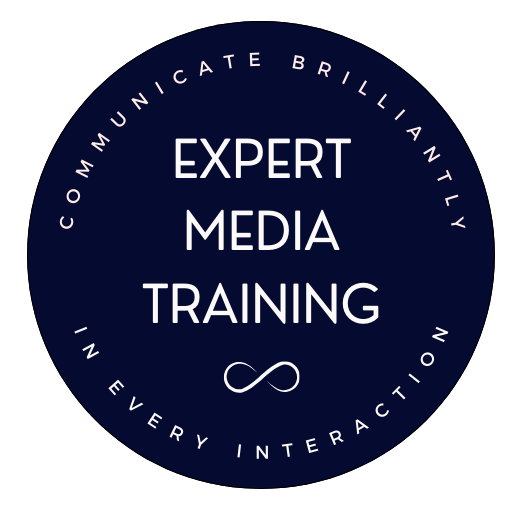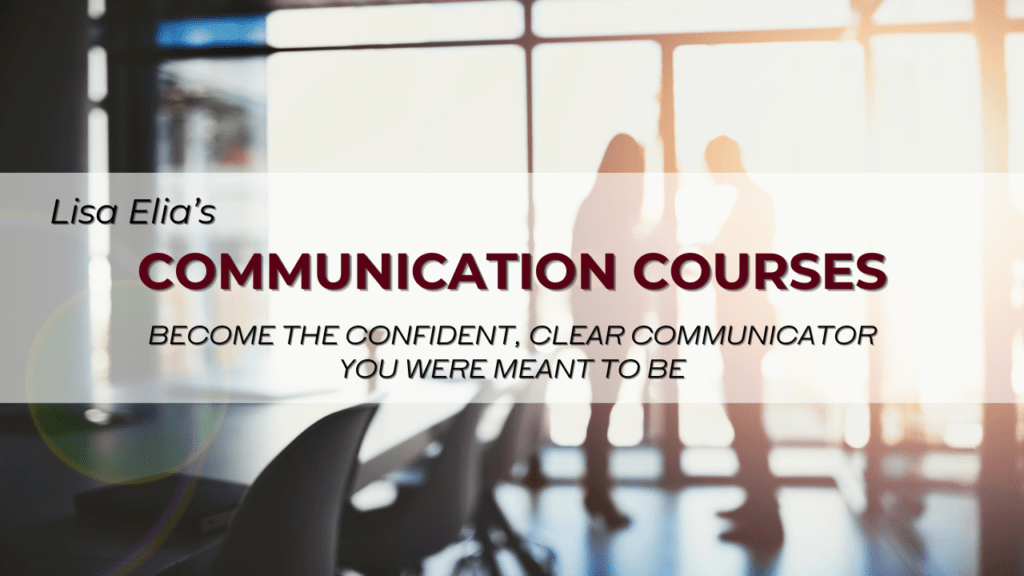Media training is meant to help anyone who is going to be interviewed by the media to feel as prepared as possible.
Understanding the lingo that you may encounter before or during interviews will help you to feel more at ease.
This glossary of media interview terms will get you started.
a-roll – This is the footage shot by the primary camera, in shoots with more than one camera.
attribution – Attributing the source of information to its originator. If you provide information or quotes that are not your own, be sure to mention the source. If you do not, you risk being accused of plagiarism, which is illegal and damaging to your reputation.
b-roll – This is background footage that is generally shown to accompany voice-over provided by a news reporter or the audio of an interview. Sometimes TV news crews will shoot b-roll, and sometimes the producer will ask interviewees or their PR representatives to supply b-roll. It is beneficial to have b-roll available if you have something that could add visual interest to a news story, such as footage of your product being manufactured, or a tour of your facility. For people in the entertainment industry, interviewers might expect you to bring clips of films or TV shows that are being promoted: the studios will generally provide these.
boom (microphone) – This is the large microphone that is generally at the end of a boom pole and held near the action, to capture sound.
Chyron (pronounced ˈkīrän) – The graphics or words that appear at the bottom of a TV screen. The Chyron Corporation created the on-air graphics that became popular, and subsequently, the name “Chyron” has become used generically. In some countries, this is referred to as a “name super” or “cap gen” or “CG”.
crawl – This is the text that “crawls” along the bottom of a TV screen during an interview or news segment. Sometimes this text is unrelated to what is on screen.
lapel mic/lavalier mic/personal mic – For many TV interviews, a lapel mic or lavalier mic will be clipped onto your clothing, with the “mic pack” clipped to your clothing, somewhere where it will not be seen, such as the back of your belt, or even inside a dress or shirt. Consider this when choosing your clothing for an interview.
mic pack – This is the electronic pack that transfers the signal from a lapel mic to the camera or soundboard.
off the record –I advise clients not to say anything that you do not want to see in the news. With social media acting as an amplifier of any message, this is a good rule to follow in most areas of your life (except to your very inner circle).
press kit – Those of you who are reading this who work with publicists or an in-house PR team probably already have had a professional press kit developed for you. This phrase is included in this glossary because many people casually interchange “press kit” and “sales kit,” but they are not the same things. When members of the media request your press kit, they do not want your sales materials. They want to see your factual press kit materials. A press kit generally includes the background information that members of the media may need to produce articles or stories on you, including a biography, a company backgrounder, information on your products and services, key press clips, and references to relevant facts and studies.
remote (interview) – A remote interview is when the interviewer is in a different location than the interviewee. Remote interviews can occur via Skype or other videoconferencing software applications and systems, or you may be asked to go to a studio to shoot a remote interview with an interviewer that is located elsewhere. Or, a remote interview may be shot at some other location. This is sometimes called a “live shot”.
still (photograph) – Stills are simply photographs, as in “still images”, as opposed to “moving images”. Print media outlets will often ask for still photographs that can support the story being written, but radio and TV producers might also ask for stills to be used in producing their stories. Radio stations now have active and very visually appealing websites, so good visuals are now necessary to support some radio interviews as well as print and TV interviews.
talking points – From the perspective of many members of the media, the talking points that they may ask you or your representatives to send to them are discussion points or topics that you will discuss in a media interview. You might also have a separate list of talking points that are the discussion points you want to incorporate into your answers.
Media training entails much more than understanding media interview terms.
To excel in media interviews, you must be prepared on many levels that go far beyond media interview terms. Good media training should address the strategy behind the interviews, and prepare you physically, mentally and emotionally.
For more media training tips, visit these links on our site:
Frequently Asked Questions about Media Training
https://expertmediatraining.com/faqs-about-media-training/
Media Training Tips for Actors, Music Artists and Performers
https://expertmediatraining.com/media-training-for-actors-music-artists-and-performers-media-interview-tips/
Media Interview Checklist from a Los Angeles Media Trainer
https://expertmediatraining.com/media-interview-checklist-from-a-media-trainer/
Body Language in Interviews and Meetings – Nonverbal Communication
https://expertmediatraining.com/body-language-in-interviews-and-meetings/
How to Create an Online Press Room That the Media Will Love
https://expertmediatraining.com/online-press-room-tips-from-media-trainer/
Prepare for TV Interviews BEFORE You Book One – Tips from an LA Media Trainer and Spokesperson
https://expertmediatraining.com/prepare-for-tv-interviews-media-trainer-tips/
To download our free Media Interview Guide and other tools, click here.
To check out our online courses, click here.
For a complimentary consultation to discuss private training for yourself or your team, click here.

This post was written by Lisa Elia, a media trainer, presentation trainer, pitch coach, communication expert, and speaker. She trains clients around the world for media interviews, speeches, internal and external presentations, panels, investor presentations, and promotional videos, and provides executive and team communication coaching.
With more than 25 years of experience, Lisa has prepared clients for interviews with TODAY, GMA, The Wall Street Journal, CNN, ESPN, and hundreds of other outlets. Lisa has shared her expertise with national media outlets that include Inc., Entertainment Tonight, E!, and many others. Clients include entrepreneurs, Fortune 500 companies, and everything in between as well as athletes, celebrities, and other public figures.
To arrange a free consultation, call us at 310-479-0217. Or, you can email us at team@expertmediatraining.com



